Netflix’s ‘Griselda’ channels ‘70s excess — with a cameo by the L.A. Times building
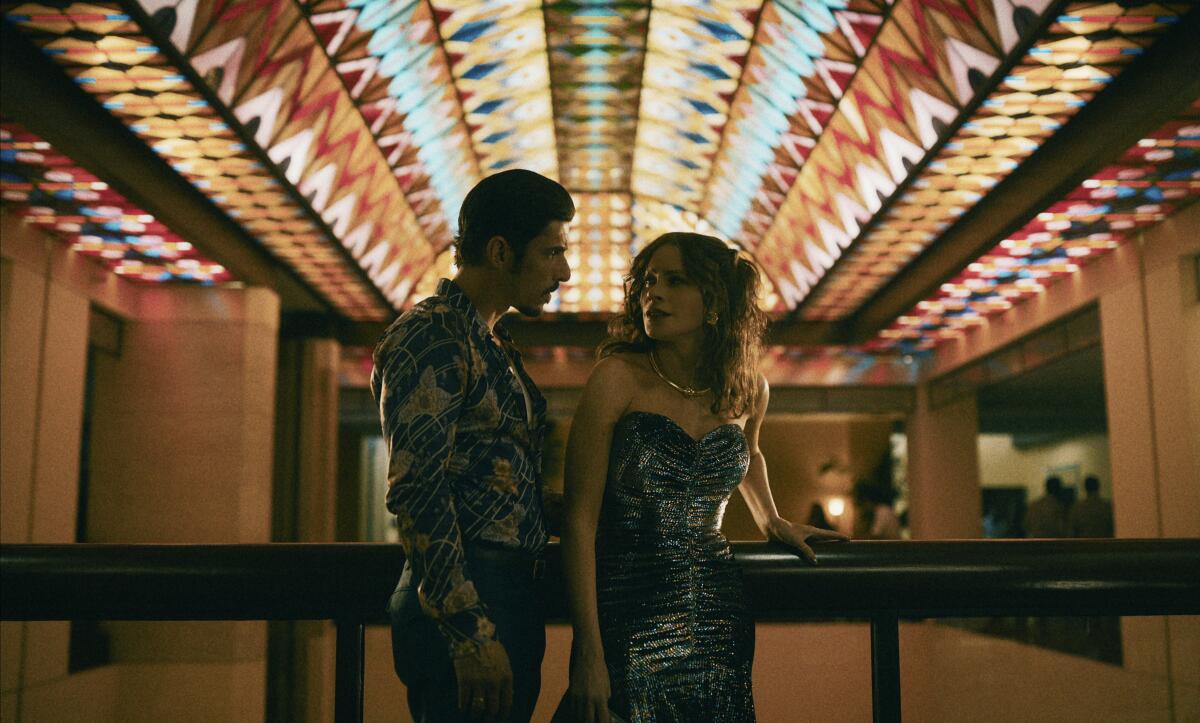
- Share via
It’s been a week! When I’m not obsessing over the Nicki Minaj-Megan Thee Stallion feud (I’m Team Megan), I’m knee-deep in narco novelas. I’m Carolina A. Miranda, art and design columnist for the Los Angeles Times, and I’m here with pop gossip and essential arts news:
Less is a bore
In 1973, when the Times Mirror building designed by architect William Pereira opened in downtown Los Angeles, it was feted with a splashy party that featured a banquet of lobster-stuffed crepes and lemon mousse and a who’s who of powerful Angelenos. Guests wandered through wood-paneled corporate offices and a sixth floor atrium studded with skylights. As Edie Wasserman told Times society editor Jody Jacobs upon its opening: “No one would believe newspaper people work here.”
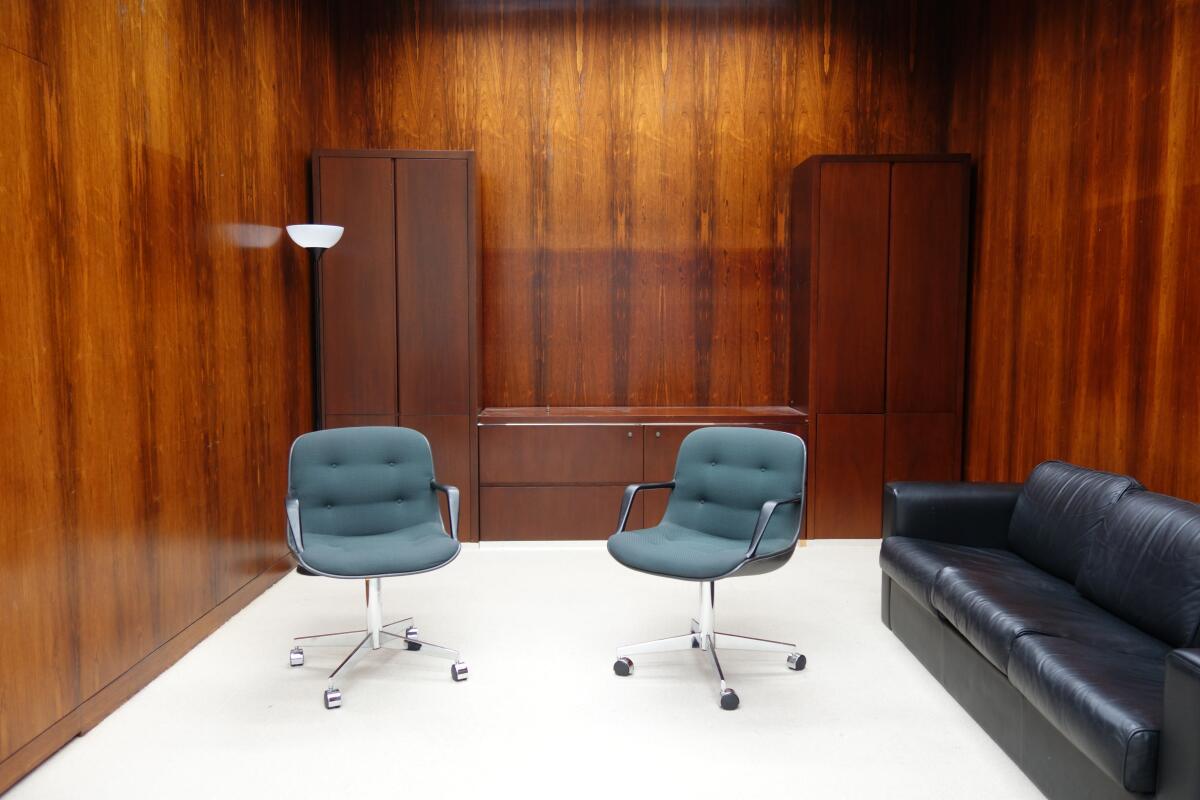
The building was, indeed, a vibe. Pereira, along with interior designer Charles D. Kratka, who crafted the tonier upper floors, created a sumptuous Late Modern environment chock-full of deep pile carpet, miles of shimmering wood paneling and starburst chandeliers in the ladies’ lounge.
I spent some quality time sneaking around the building in 2018, prior to The Times’ relocation to El Segundo. At that point, the structure largely lay empty — used principally as a filming location. But you could still find traces of the old glamour. One of my favorite spaces was a women’s restroom (I can’t remember on which floor) that features arched doorways and a lounge area swathed floor to ceiling in mirrors, with counters made from translucent glass. I used to jokingly refer to it as the Times Mirror Memorial Cocaine Bathroom.
You’re reading Essential Arts
Make the most of L.A. with our guide to events and happenings in the SoCal arts scene. In your inbox twice a week.
You may occasionally receive promotional content from the Los Angeles Times.
Well, the scenic designers for Netflix’s engaging new narco novela, “Griselda,” inspired by notorious real-life narcotrafficker Griselda Blanco, appear to have read my mind. A storied corner of the old Times Mirror building makes its way into the series: the Chandler Apartment, a residential space for members of the family that ran The Times throughout much of its existence, appears as a penthouse belonging to a Miami drug lord named Amilcar (played by José Zúñiga).
Best of all: resting on an easel in one corner of the room is a replica of the Huntington Library’s famous “Blue Boy” (more formally known as Thomas Gainsborough‘s “A Portrait of a Young Gentleman,” from 1770). Who says drug kingpins aren’t into the finer things in life?
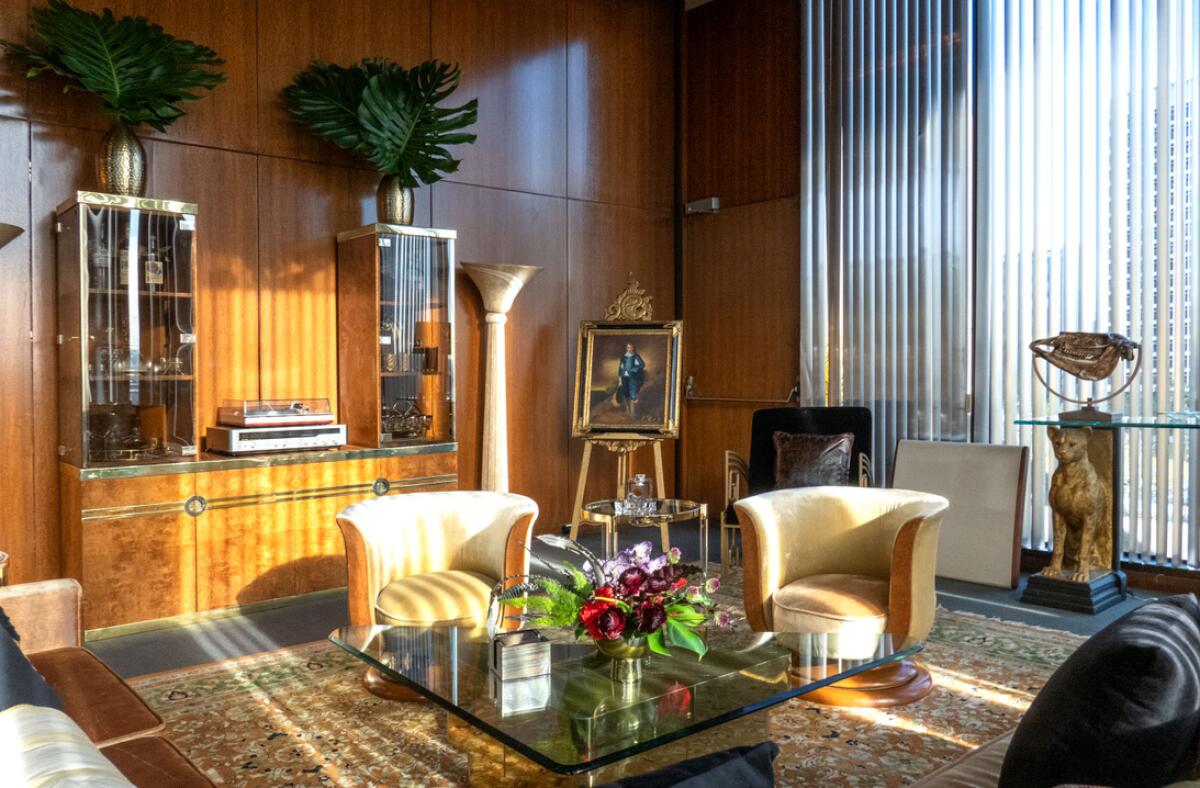
I’ve been fascinated by the show for a variety of reasons.
For one, I have a long-running interest with how the entertainment industry depicts the drug trade. (I wrote about that back in 2019.) And “Griselda” offers a view in which women are much more than just bikini-clad appendages at a narco pool party. Two, it’s been fun to watch Sofía Vergara, a skilled comedic actor, transform into a gritty, bloodthirsty queenpin. (My colleague Yvonne Villarreal has a great profile on Vergara.) And, lastly, there is the show’s ridiculously sumptuous production design led by Knut Loewe.
“Griselda,” intriguingly, was shot in L.A., not Miami (which is perhaps why the outdoor scenes don’t feel as buggy and moist as they should be). Standing in for the druggy Mutiny Hotel in Coral Gables, Fla., where the kingpin confabs take place, is the ballroom of the Queen Mary and an ‘80s-era hotel in the City of Industry.
Moreover, the show steers clear of South Florida visual tropes. Instead of Pepto pinks, the fashion and the sets are infused with earth tones — browns, golds, mustard yellow and orange — in work of costume designers Safowa Bright Bitzelberger and Sarah Evelyn and set decorator Kim Leonard, among others. (Like the ‘70s I remember.) Wallpapers feature a veritable forest of pineapples, palm trees and banana leaves and I found myself lusting over some of the terrific ceramic lamps.
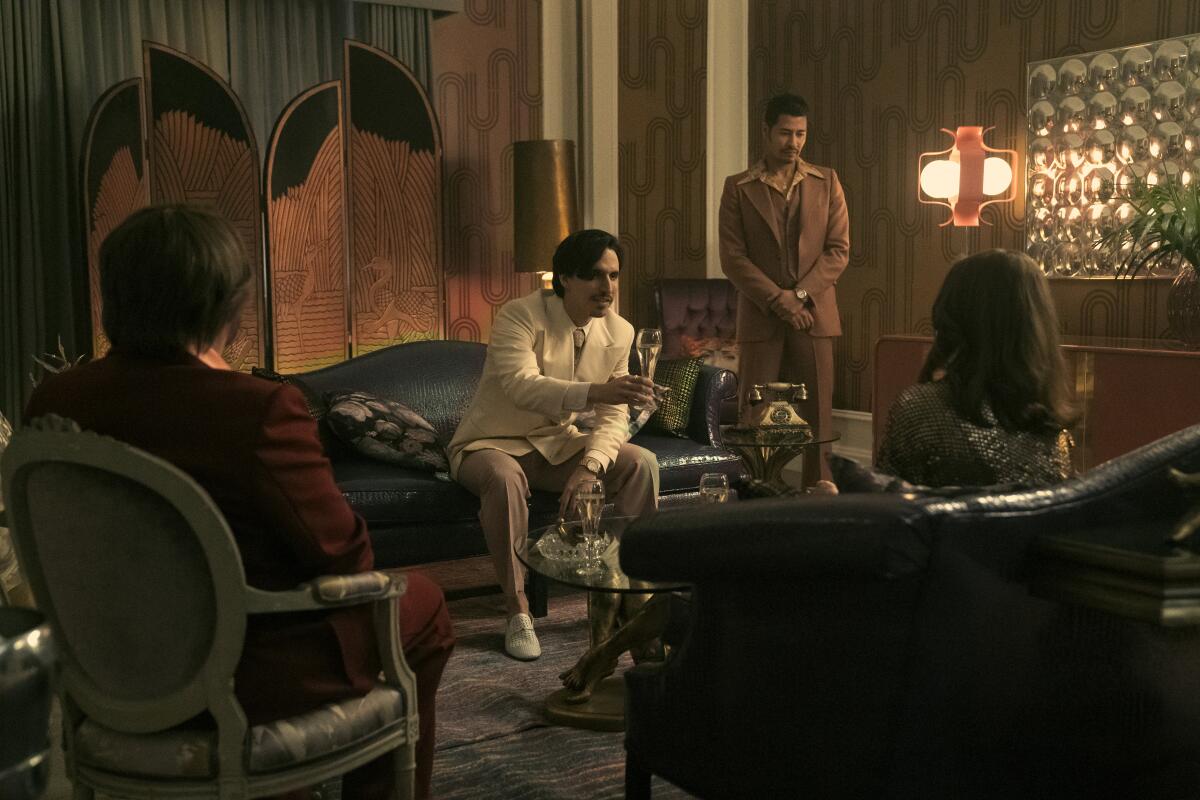
Tara Bitran at Netflix’s “Tudum” website has a great explainer on how the design and the fashion came together — down to the sculptures of jaguars and golden tortoises that inhabit the show. “There was a theme of animals with the real-life narcos that I really wanted to maximize,” Leonard tells Bitran, “because there’s nothing that screams excess like giant gold tortoises.”
That and ‘70s corporate headquarters.
Classical notes
Wagner‘s four-opera “Ring” cycle has only rarely been presented in full in Los Angeles. But classical music critic Mark Swed writes that a presentation last weekend of “Das Rheingold” by the LA Phil makes it “safe to say that there is such a thing as an L.A. ‘Ring.’ Gustavo Dudamel conducted, Frank Gehry created sets, turning his Walt Disney Concert Hall into a site-specific Valhalla, the gods’ mega-mansion.”
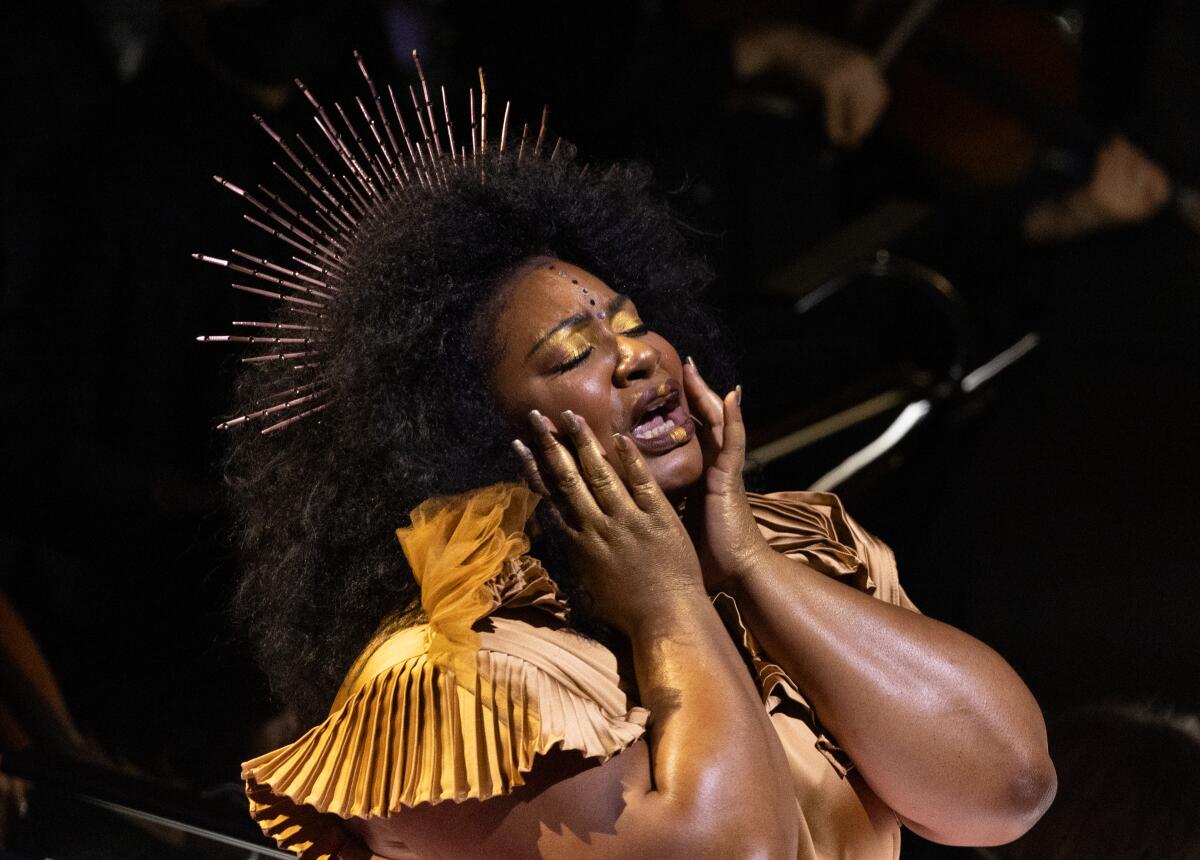
Up north, the San Francisco Chronicle’s Joshua Kosman reports on Michael Tilson Thomas’ take on Mahler’s Fifth Symphony for the musical director’s final subscription program with the San Francisco Symphony. (Tilson Thomas has been battling an aggressive brain tumor.) “The mood in the hall was a combination of gratitude and admiration for a cultural leader who has done perhaps more than anyone for the artistic and civic life of San Francisco,” writes Kosman.
On and off the stage
“Matthew Bourne’s Romeo and Juliet” is onstage at the Ahmanson Theatre. This piece of dance theater takes Shakespeare’s famous tale of star-crossed lovers and places it in a fascistic asylum. The production departs from Shakespeare’s narrative in other ways too, not always successfully, writes Times theater critic Charles McNulty. But dancers Monique Jonas and Rory Macleod “bring emotional grace to Romeo and Juliet’s ruin.”
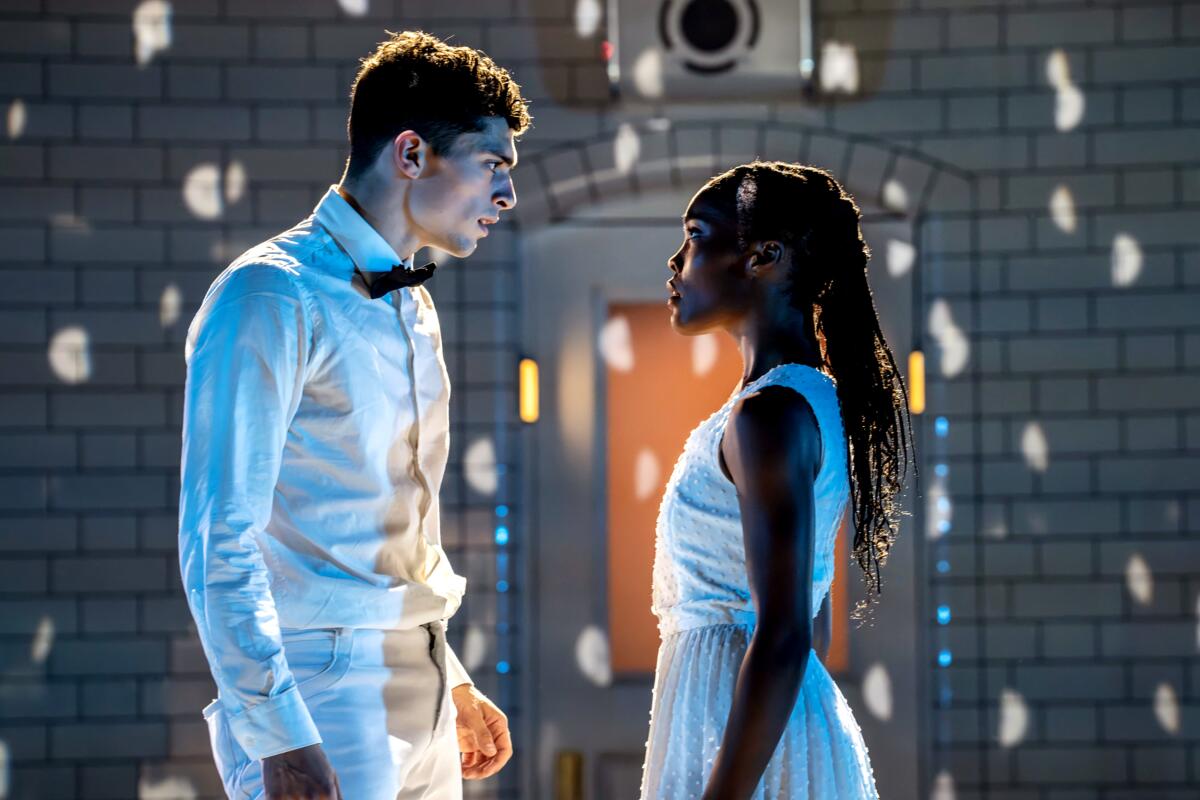
At the Geffen Playhouse, you’ll find Selina Fillinger‘s comedic farce “POTUS: Or, Behind Every Great Dumbass Are Seven Women Trying to Keep Him Alive.” McNulty writes that Fillinger’s play offers a feminist corrective to a type of play generally centered on male characters, but its “delirious premise” — a group of women contending with the actions of a “randy” U.S. president — “makes itself dizzy from overexertion.”
In and out of the galleries
At Regen Projects, artist Catherine Opie has a show of never-before-seen photographs drawn from series she has made throughout her career. This includes work that chronicles her intimate queer circles, as well as images of L.A.’s monumental structures. (The new 6th Street Viaduct makes it in.) And there is, of course, the work that nods at the cruel bigotry of anti-LGBTQ+ conservatives. As Times art critic Christopher Knight writes: “Historical survey shows in commercial galleries don’t often speak with a timely voice, but this one does.”
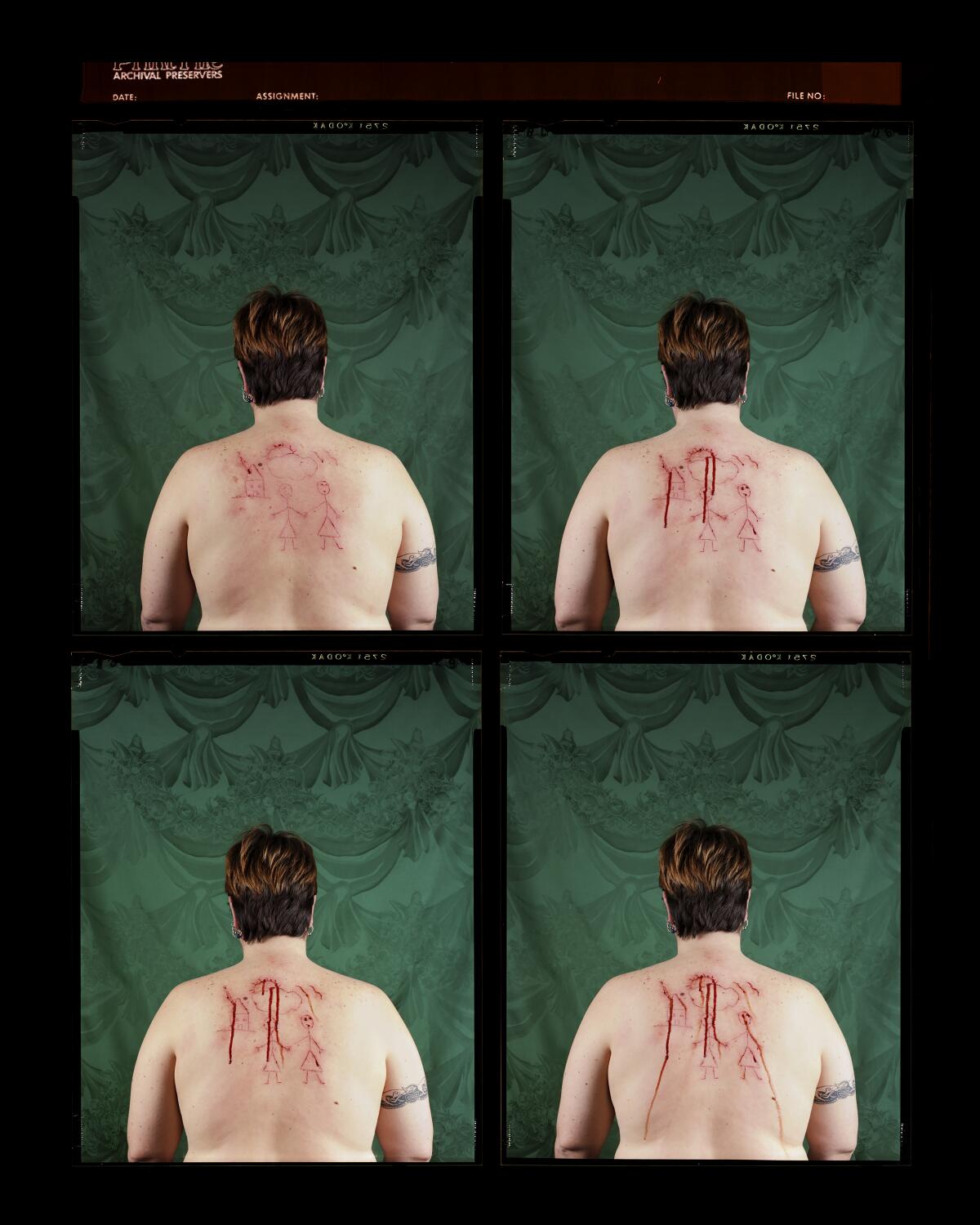
The Times’ Reed Johnson has a look at the initiatives implemented by Maria Rosario Jackson as she enters her third year as chair of the National Endowment for the Arts. She is the first Mexican American and African American woman to serve in the role.
Over at the Samuel Oschin Air and Space Center at the California Science Center, the space shuttle Endeavour was placed into its new home by an 11-story crane. My colleagues Andrew J. Campa and Rong-Gong Lin II were on-site to view this delicate operation.
Enjoying this newsletter? Consider subscribing to the Los Angeles Times
Your support helps us deliver the news that matters most. Become a subscriber.
Eight artists in a show canceled by the Santa Barbara Museum of Art describe the decision as “outrageous” in a public letter.
Design time
Curious about building an accessory dwelling unit on your property? On Feb. 10, a group of housing and homebuilding organizations will host a self-guided tour of ADUs around Los Angeles, from garage conversions to units that are still under construction. The Times’ Lisa Boone has all the deets.
Moves
The SOM Foundation and the MAK Center for Art and Architecture have teamed up for a new Researcher-in-Residence program intended to help address pressing issues in the built environment.
The Venice Biennale has announced the 331 artists that will participate in its 2024 edition, curated by Adriano Pedrosa. Among the L.A. artists selected are Beatriz Cortez, Lauren Halsey and Simone Forti.
Passages
Chita Rivera, the Broadway star renowned for her propulsive performances and acrobatic high kicks, has died at 91. McNulty pens an appreciation of an actor, dancer and singer who helped make musicals such as “West Side Story” and “Kiss of the Spider Woman” iconic: “When musical theater hit hard times, she became one of its saving graces, casting a spell with her limbs for a new era of choreography. Her performance as Velma Kelly in ‘Chicago’ helped immortalize Bob Fosse’s dance vocabulary.”
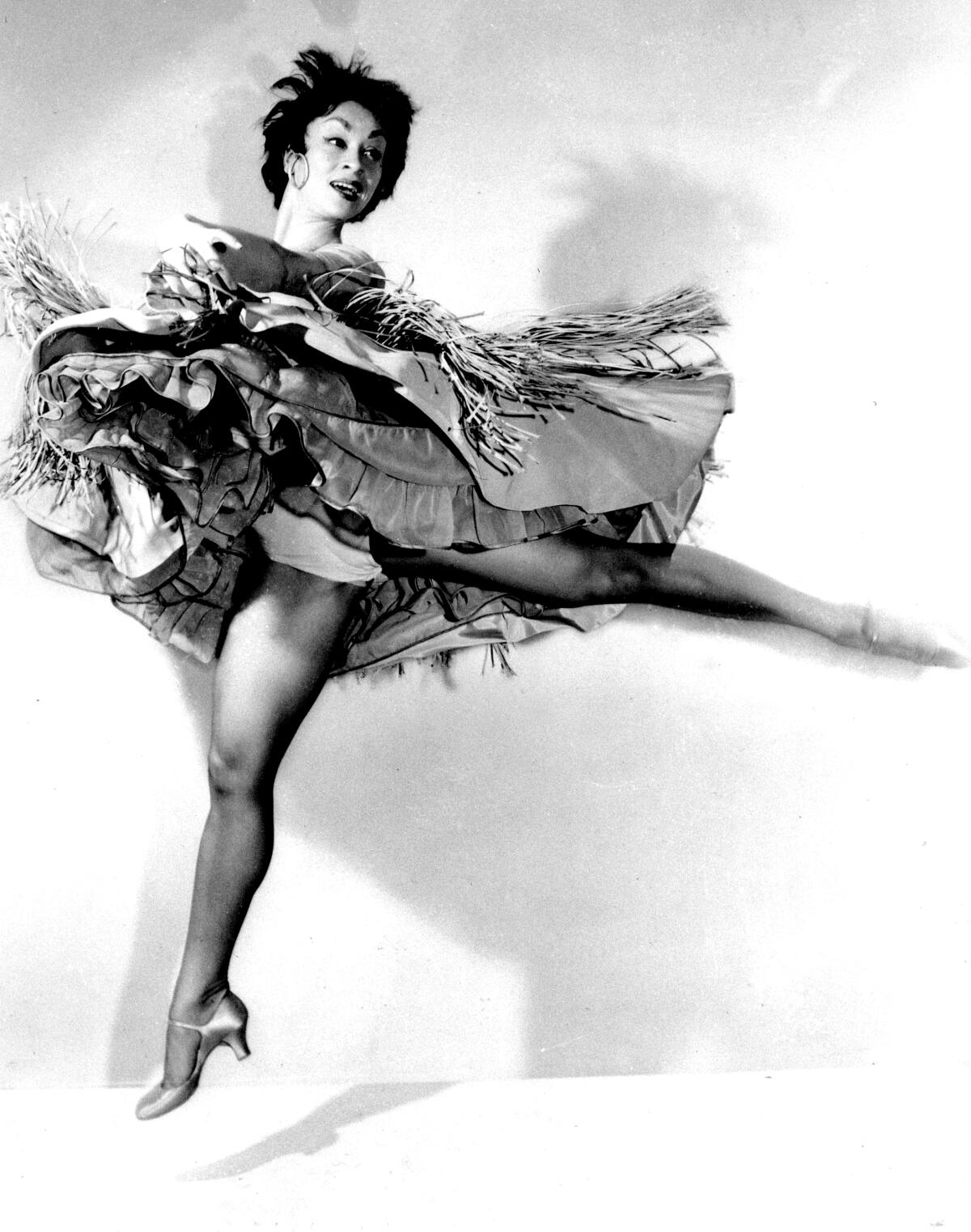
Theater critic Gordon Rogoff, author of “Theatre Is Not Safe” and “Vanishing Acts,” died last week at the age of 92. McNulty writes about the legacy of his work: “No critic since Kenneth Tynan was better able to capture in vivid, richly metaphoric language the unique brilliance of a stage performance.”
In the news
— New York’s Rubin Museum is closing after 20 years.
— The Getty has a look at the diversity of representation in art of the Middle Ages.
— Emily Colucci parses the bewildering artspeak in the Whitney Biennial press release, which is the kind of turgid writing I have to pore over all day.
— The New Yorker’s “Critics at Large” podcast has a great episode devoted to criticism.
— Is Luna Luna worth it? William Poundstone weighs in.
— Adrian Searle at the Guardian reflects on the legacy of sculptor Carl Andre, the “OJ of the art world.”
— Andre’s death has led to many public expressions of support for his late wife, Ana Mendieta. I really enjoyed Pablo Helguera‘s beautiful tribute to the significance of her work in his life.
— Artist and performer Laurie Anderson announced her resignation from a German university after questions regarding her support of Palestinian causes.
— A byzantine bureaucratic rule has prevented U.S. airports from being seamlessly connected to public transit. That rule has now changed.
— A guide to all the Kobe Bryant murals.
And last but not least ...
I’m always here for TikTok’s @CindyMindy and her blazing dance moves!
The biggest entertainment stories
Get our big stories about Hollywood, film, television, music, arts, culture and more right in your inbox as soon as they publish.
You may occasionally receive promotional content from the Los Angeles Times.




